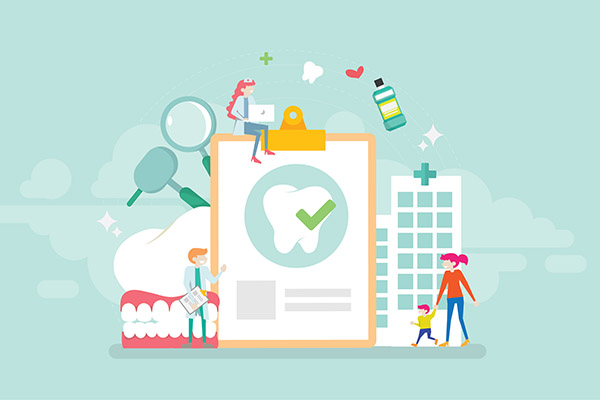Are You at Risk for Gum Disease?

Some years ago, many people believed that aging was the biggest cause of gum disease. Today, we know that aging itself is not the culprit of gum disease. There are other factors can make you more susceptible. Fortunately, learning about the risk factors and adopting preventive care methods is effective for preventing the disease.
Information about gum disease
What is periodontal (gum) disease?
Periodontal disease is an infection that causes inflammation of the gum tissues and other supporting tissues of the teeth. The initial stage of gum disease, known as gingivitis, starts when the toxic substances created by a bacterial plaque on the teeth cause gum irritation, causing bleeding and inflammation. If neglected, gingivitis worsens into a more complex disease called periodontitis, which may lead to tooth loss.
Risk factors of gum disease
According to the Center for Disease Control (CDC), almost 50 percent of all adults above age 30 have some form of gum disease. The risk factors of gum disease include:
- Medications: Certain medications affect saliva flow, causing dry mouth and limiting your body’s ability to flush out bacteria. Treatments for conditions such as HIV and cancer can also have adverse effects on the gums
- Diabetes: This condition inhibits your body’s ability to combat infections, such as gum disease, due to unstable blood sugar levels. The ability to control blood sugar is vital for oral health
- Smoking: Smoking is not just detrimental to the health, it affects your gums too. Smoking causes dry mouth and can hinder the successful treatment of gum diseases
- Hormonal changes in women: Hormonal fluctuations and pregnancy can heighten inflammatory reaction to bacterial plaque, causing gum bleeding. During pregnancy, women are susceptible to “pregnancy gingivitis.” If untreated, that could progress into periodontitis
- Heredity: Your genetic makeup can also predispose you to the risk of gum disease
Signs and symptoms of periodontal disease
Certain signs indicate gum infection, which you should never ignore, including:
- Loose teeth and painful chewing
- Inflamed or swollen gums that are receding from the teeth
- Bleeding and painful gums, especially while brushing and flossing
- Persistent bad breath and a foul taste in the mouth.
- Changes in bite and teeth alignment
- Changes in the fit of dentures or partial bridges
Once you start noticing any of the above signs, reach out to your dentist immediately for treatment.
Preventing periodontal disease
Prevention is the best solution to gum disease. Excellent oral hygiene, such as thorough brushing twice daily and flossing of the teeth, is crucial for fighting against gum diseases. This will help reduce the number of harmful bacteria responsible for gum diseases in the mouth.
A regular dental appointment is also important since it allows your dentist to check the teeth and perform a deep cleaning to eliminate tartar that may have accumulated on the teeth. Also, ask your dentist about picking a toothpaste that helps to fight plaque and tartar accumulation and antibacterial mouthwashes that control bacteria in the mouth.
In conclusion
Your dentist is your best line of defense for reducing your risk for gum disease. Discuss any potential risk factors and work collaboratively to develop a proper oral health plan.
Contact us today for more information. We can help guide you on how to avoid gum disease.
Request an appointment here: https://www.sacramentosleepdentist.com or call Dental Excellence of Greenhaven at (916) 293-0504 for an appointment in our Sacramento office.
Check out what others are saying about our services on Yelp: Read our Yelp reviews.
Recent Posts
Some people genuinely fear getting a dental checkup. Yet, not only is seeing a dentist essential to maintaining healthy teeth and gums, but it is also a process that is not scary at all. Dental professionals recommend a checkup every six months. That way, you can prevent a simple problem from becoming a serious issue.…
Most people grow up believing certain myths about dental checkups. Online information can also be misleading when it comes to dental healthcare. As innovations in dental health continue to surface, most of these falsities are debunked. Below are some of the common dental checkup myths and the truth behind each of them.Fact: Firm or medium-bristled…
A general dentist shared some ways to help prevent bad breath. This is a topic no one wants to discuss. Bad breath happens to everyone at one point or another. If you take proper precautions, you can avoid having bad breath. We should openly talk about this taboo topic. The more we talk about it, the…
The dentist often does a dental checkup and cleaning to look for cavities or other teeth issues. That way, the patient can have a professional cleaning and exam every six months. Many times, patients do need to come in more often than that. That is true if the patient is at risk for an oral…


